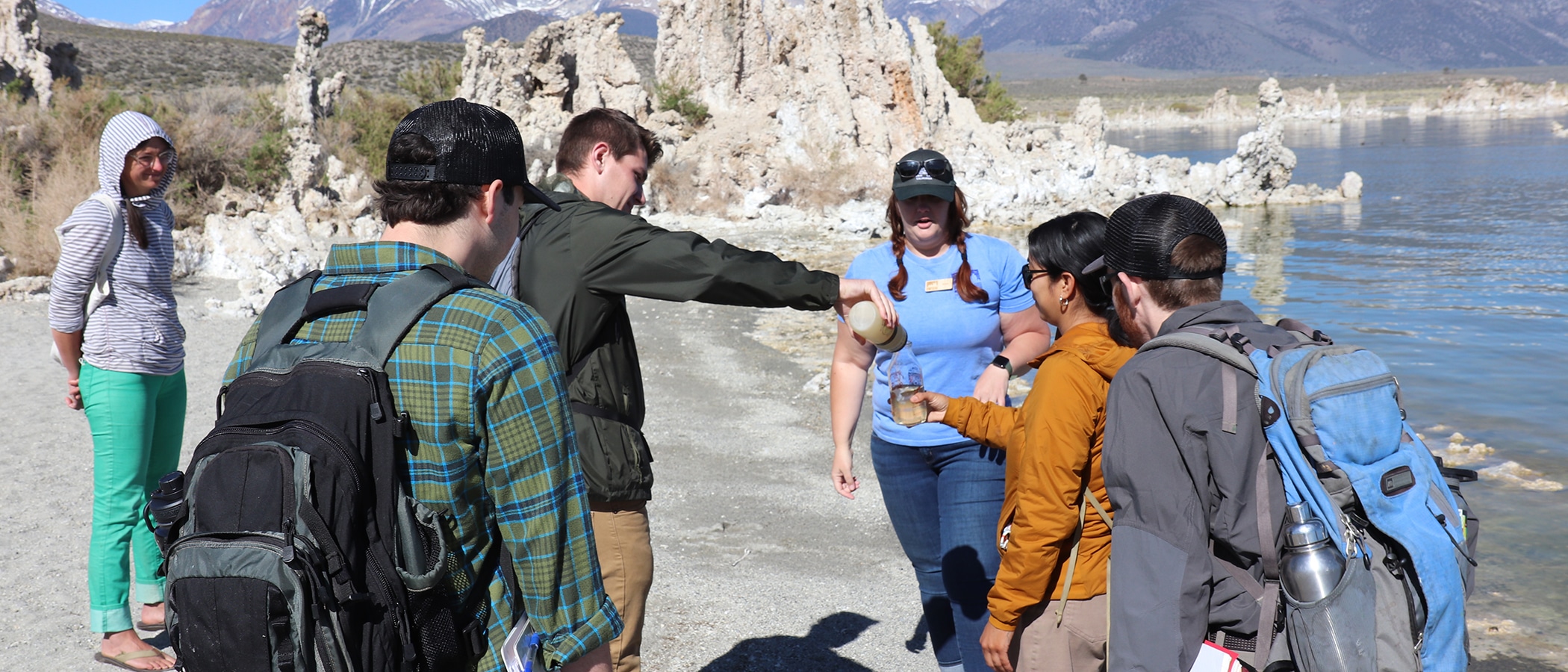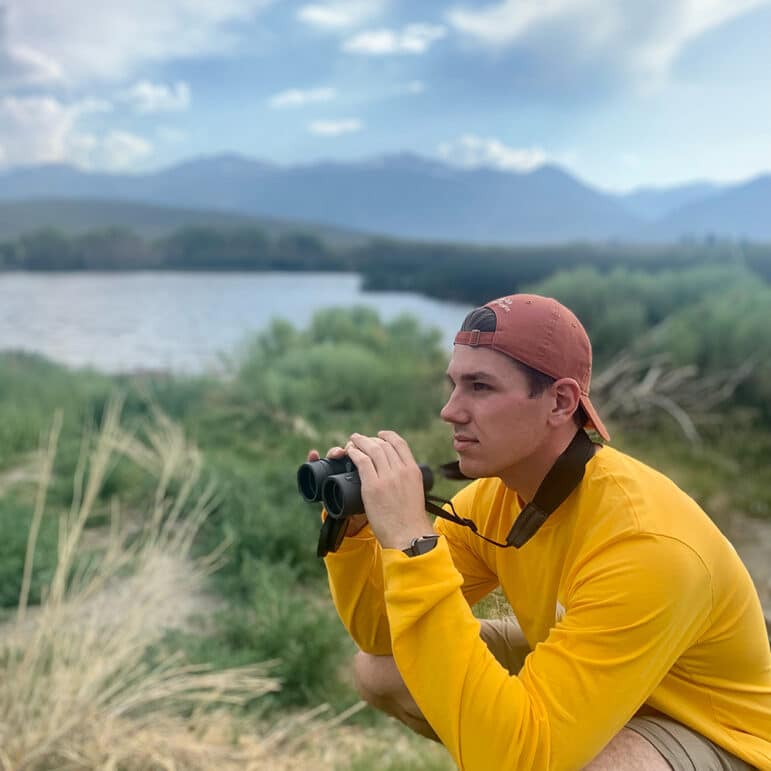
In 2013, I first came to the Mono Basin through the Mono Lake Committee’s Outdoor Education Center as part of a high school group called Global Lab. Back then, I was an unruly, sports-minded brat, who hadn’t spent much time outdoors nor knew a thing about Mono Lake. After a week experiencing the awe-inducing Sierra, learning the complex history of Mono Lake, and surviving the wrath of a commanding (but loving) Outdoor Education Center Manager, I could not help but change. I went from jock to environmental steward and made it a yearly vow to return to Mono Lake to not lose touch with myself and remind myself of how fragile and beautiful the Mono Basin is.
However, for all my excursions to the Mono Basin and elsewhere, I was a terrible naturalist. About the only thing I could identify in the animal kingdom was a dog from a cat from a fish from a bird. And with plants, I am embarrassed to say that I learned just as much as my first-graders when I taught them our lesson on plant anatomy (who knew flowers and petals are not the same things?). Needless to say, I was always appreciative of the presence of natural spaces, but I was never privy to these space’s inhabitants. This was until the 2021 intern training earlier this summer.
The official kickoff to the Mono Lake Internship is a week-long training where we Interns get to explore the basin in much more detail as well as receive an introduction to all the things the Committee does. During ecology training led by Rose Nelson and Nora Livingston, I was introduced to birding. We were given a pair of binoculars on this trip and asked to narrow in on birds that we saw. That day we saw California Gulls, phalaropes, Eared Grebes, American Avocets, a Mountain Bluebird, and most fascinating of all, a Western Tanager. This male tanager flew within about ten feet of our group and put on a spectacle: it danced, it sang, it gave us a flight show, it puffed out its feathers, and even had lunch in front of us. This tanager’s performance instantaneously spurred within me a new interest in birding. After that training, I started to devour all the information I could on birding: I purchased several field guides; I downloaded every app I could find on identifying birds; I watched virtual bird seminars and acquired my first pair of binoculars.
Since the training, I have gone on a fair amount of birding ventures. While I am a birding neophyte, I am always thrilled if I come back from a day’s trip correctly identifying a single new bird. On one of my most recent outings, I hiked to Spuller Lake in the upper Lee Vining Creek watershed and had a big haul: I identified Cassin’s Finches, Lesser Goldfinches, Mountain Chickadees, and a Steller’s Jay! Every time I correctly identify a new bird, I place a big star next to it in my field guide. With every star, I get more excited and motivated to identify all the birds I can. These birding trips are the most fun I’ve had in a long time.
On my way back from Spuller Lake, I started to contemplate several questions around my newfound excitement in birding (as one naturally does in such contemplative places). I asked myself, “Why did I take this up so fast?,” “Why I am so interested in this?,” and “Why does this quest to identify all these birds feel so familiar even though I am doing it for the first time?” I stewed on these questions for a while when I spotted two chickadees chasing each other up and down a pine tree. As I stood memorized, I began, puzzlingly, humming to myself … of all things … the Pokémon theme song??? I was so taken aback by the sudden melody of a favorite childhood cartoon that I stopped staring at the birds and started to stare at my soul in a state of embarrassment and judgment.
It was in this gaze that all of a sudden “it” clicked.
I flashed backed to early 2003 when I was given my brothers hand-me-down Gameboy color and old video games. One of these games was the iconic Pokémon Red. Pokémon (the game) is a video game where you take the role of a trainer who seeks to identify and capture all 151 creatures in your “Pokédex,” or index, throughout the various territories in the game. As a child, I was entranced with this game. I spent days and nights moving my avatar aimlessly in the game’s digital map, known as the “Kanto region,” in a pursuit to identify all 151 creatures in the Pokédex.
Flash forward eighteen years later to me staring at chickadees, I am still tickling the same “Pokémon-venturer” part of my brain. I have my field guides to replace my digital Pokédex. I have the Mono Basin instead of the Kanto region. And, I have my own two feet walking around aimlessly instead of my avatar’s digital ones.
With this new revelation, I have only become more of an avid birder. Admittedly, I am not nearly as good at identifying birds as I was at finding Pokémon (no matter how nicely I ask a swallow to stay still, it won’t). But in my pursuit of seeing new creatures, my spirit still sings “♪ I will travel across the land / Searching far and wide ♪” going out into the field today as it did going out into the digital ones eighteen years ago.
Top photo of this year’s intern training at South Tufa by Andrew Youssef. Ryan is third from left helping to make tufa in a bottle.


